30,000 cars delayed daily and counting
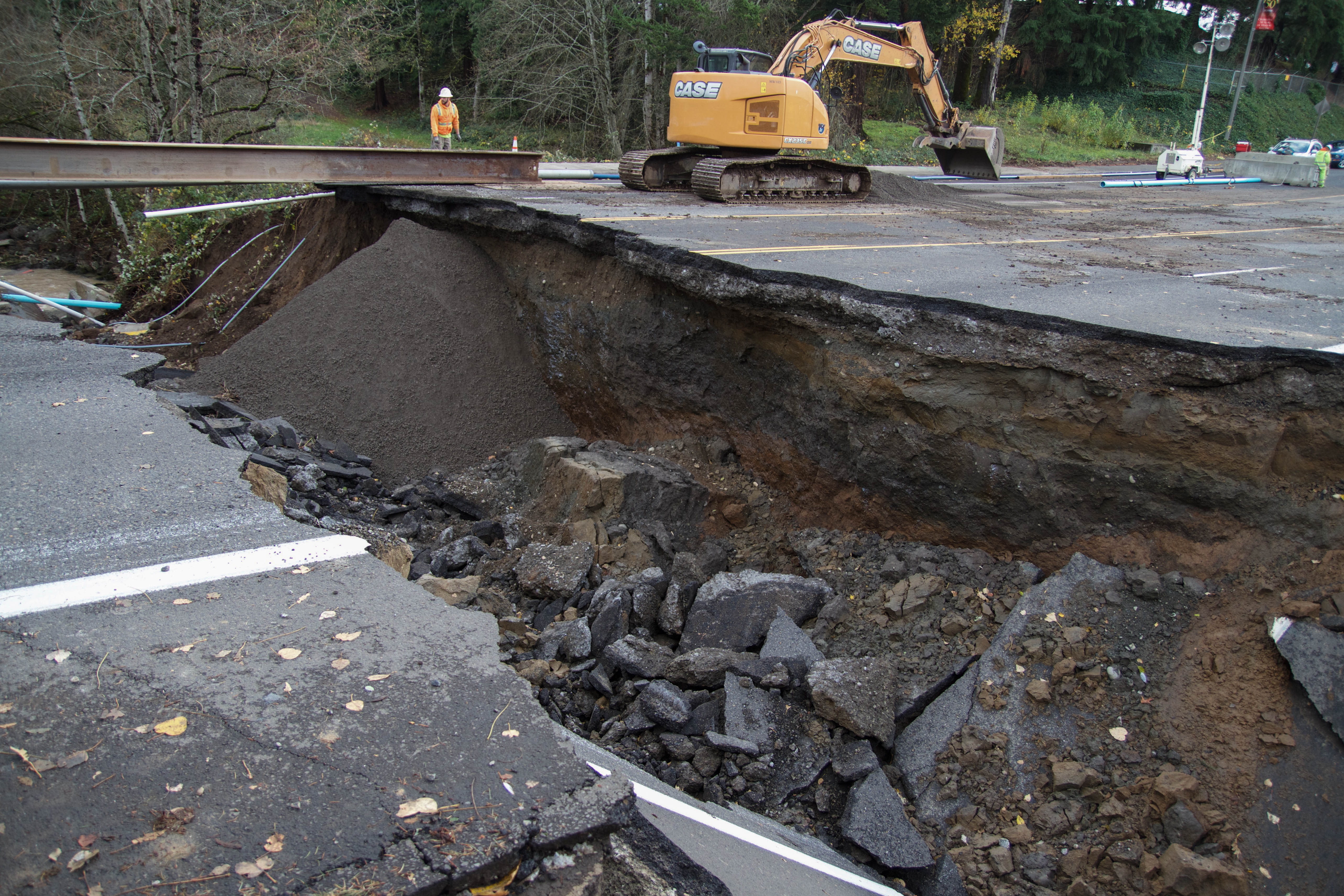
What the city of Gresham is calling an “historic” event has added to Mt. Hood’s own history, after a culvert washed out under Northeast Kane Drive, creating new challenges during MHCC’s 50th year anniversary.
The resulting sinkhole became a chasm measured to be approximately 140 feet long, 40 feet wide and 15 feet deep. It has blocked one of Gresham’s busiest roads and continues to force a detour for many MHCC students and staff.
A temporary repair is estimated for completion by Jan. 22.
Until then, to reach the main campus entrance, drivers must drive onto Northeast Hale Ave. (leading south from Stark Street, directly across from Albertsons.), and then proceed east on 29th Street towards MHCC.
There are other ways to enter the school, as indicated on the map (cover of this issue), also posted on the MHCC website.
Collapse of the road on Dec. 7 came after heavy rains, including nearly 3 inches of rain that day, that caused accidents, landslides and flooding across the Portland area.
In all, 6 inches of rain fell within 72 hours and triggered the surge of Kelly Creek, officials said.
It was an “historic event seen every 50 to 100 years,” said Elizabeth Coffey, communications manager for the city of Gresham.
Besides shutting down traffic, the washout also interrupted Mt. Hood Community College’s fall-term finals week. The broken sewer pipe forced a sudden closure of the campus and caused students and staff to move Tuesday’s tests to Thursday of that week.
The sewer pipe runs under Kane, perpendicular to where the culvert washed out between 17th and 23rd streets. The pipe, broken by the washout, caused a backup of Mt. Hood Community College’s sewer line.
“School was closed on that Tuesday, because running along (the campus), we have a collection tank for sewer and a collection tank for the south campus (athletics buildings) that has to be pumped uphill to a pump station (near the culvert, that was affected) when that sewer line went out,” said Rick Doughty, Vice President of Administrative Services.
Woody, muddy debris that jammed the Kane culvert and caused the Kelly Creek water to undercut the roadway caused potential for more trouble.
When the culvert washed out, “All of the dirt and asphalt that washed down ended up near the entrance of the other culvert (the one going under Mt. Hood’s elevated walkway to its athletic buildings),” said Charles George, MHCC facilities director. “Like, trees, balls and toys and whatever else washed up.”
A metal grate performed as designed, however. “All that stuff came through the culvert and floated down and hung on that grate, like it’s supposed to, and filtered all that debris” from continuing to float down the second culvert and back into Kelly Creek,” George said.
The Kane washout quickly became the city of Gresham’s first transportation priority.
Workers got the wastewater force main pipe from the college fixed through the night of Dec. 7 to avoid a forced shutdown of MHCC the next day. They stabilized the washout area, blocked all vehicle and pedestrian traffic and adjusted traffic signals on all major north-south arterials to reduce traffic congestion, the city said.
Crews have currently placed temporary culverts under Kane and hopes to reopen the road for use by at least Jan. 22.
An emergency declaration by the city helped to cut red tape and speed up repairs.
Gresham will wait for summer to make final repairs that will be safer than attempting a permanent fix now, because the creek will be very low during the summer, said Coffey.
The short-term fix includes two new 72-inch (diameter) culverts, replacing the former 112-inch pipe. Workers are now burying the pipes with gravel and rock before the roadway can be paved.
The original culvert was large enough to fit many school buses end to end – because of the size, there has to be a carefully designed and constructed permanent solution, Coffey said. Gresham has to coordinate with multiple governmental agencies to secure permits for this work, especially since Kelly Creek is currently an active waterway.
Kane accommodates 30,000 to 35,000 daily vehicle trips, according to city estimates, which has added to the urgency.
“The Kane Drive washout is one of the most significant and sudden transportation disruptions Gresham has ever had and it would be difficult to overstate its impact on our commuters,” said Steve Francher, city environmental services director.
For more information about the culvert and how to avoid the blockade, visit MHCC’s website at: mhcc.edu/sinkhole.

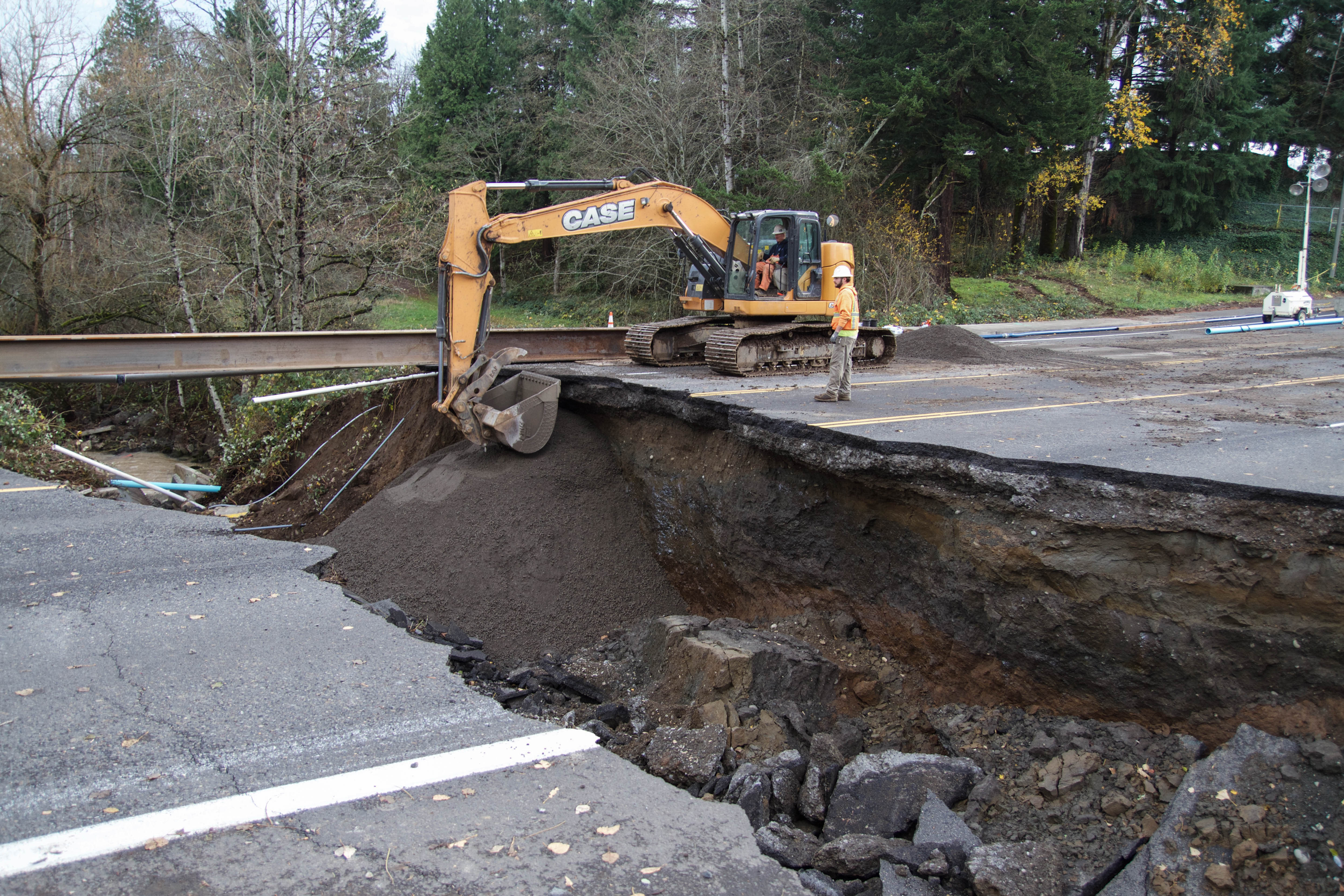
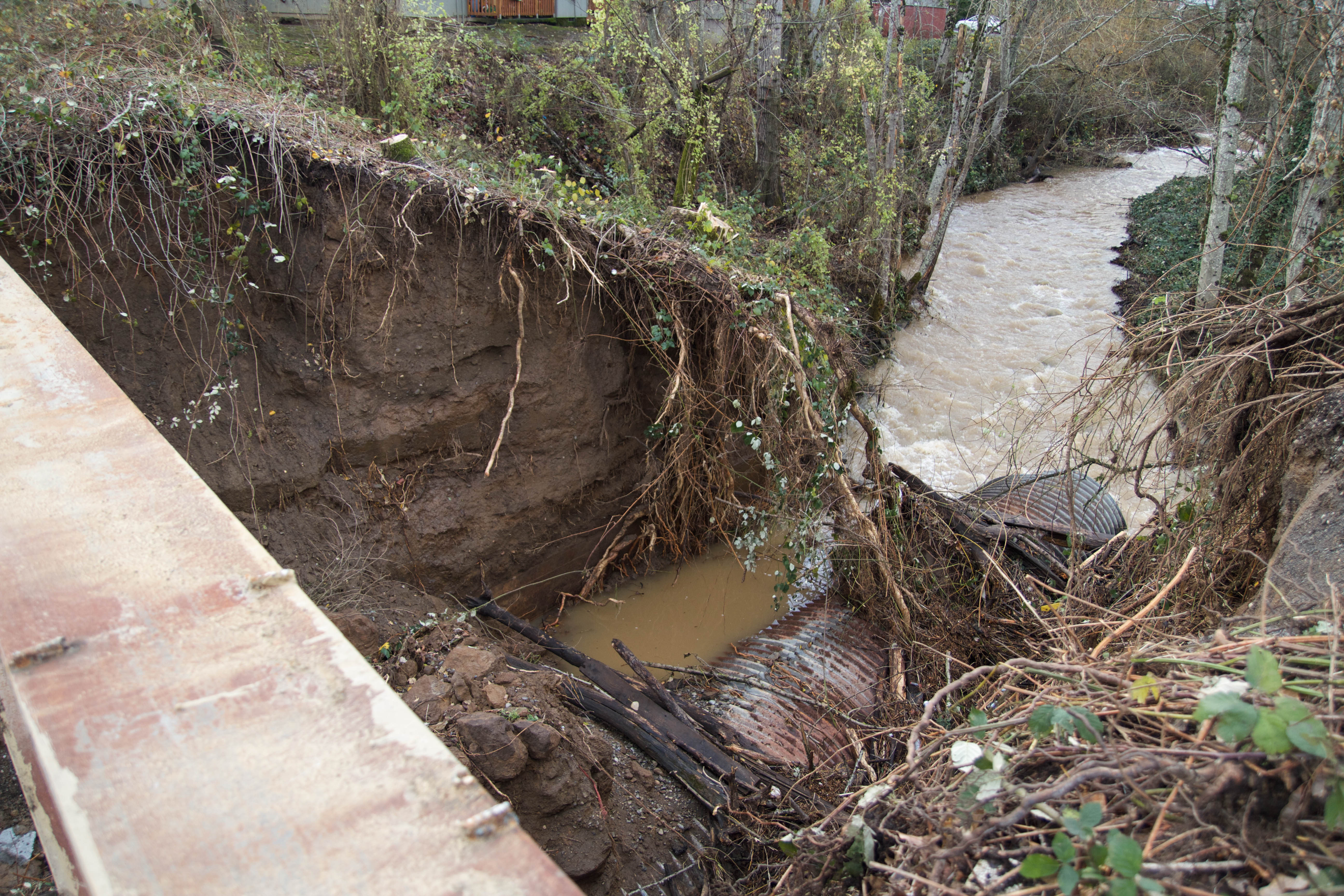
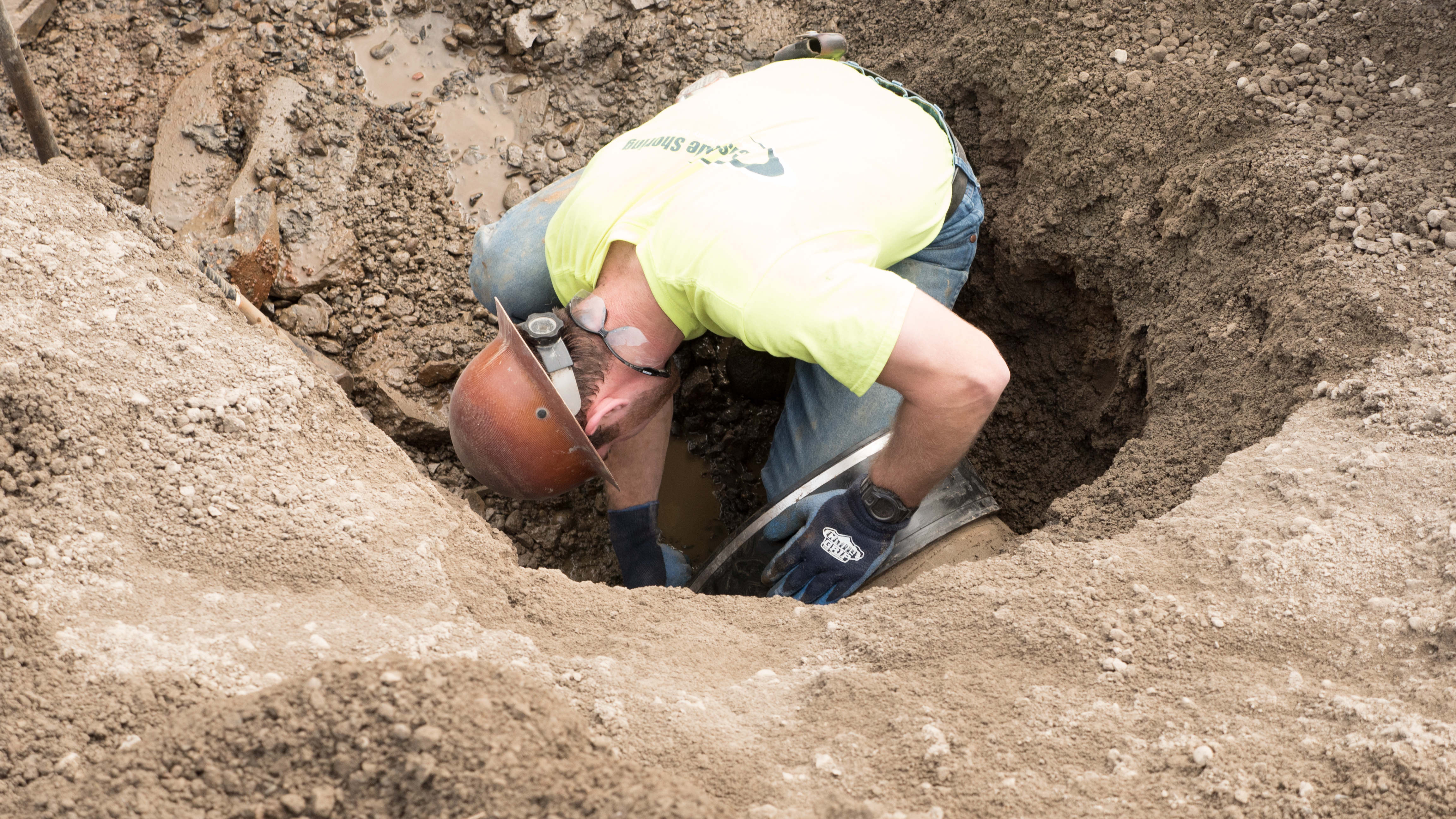
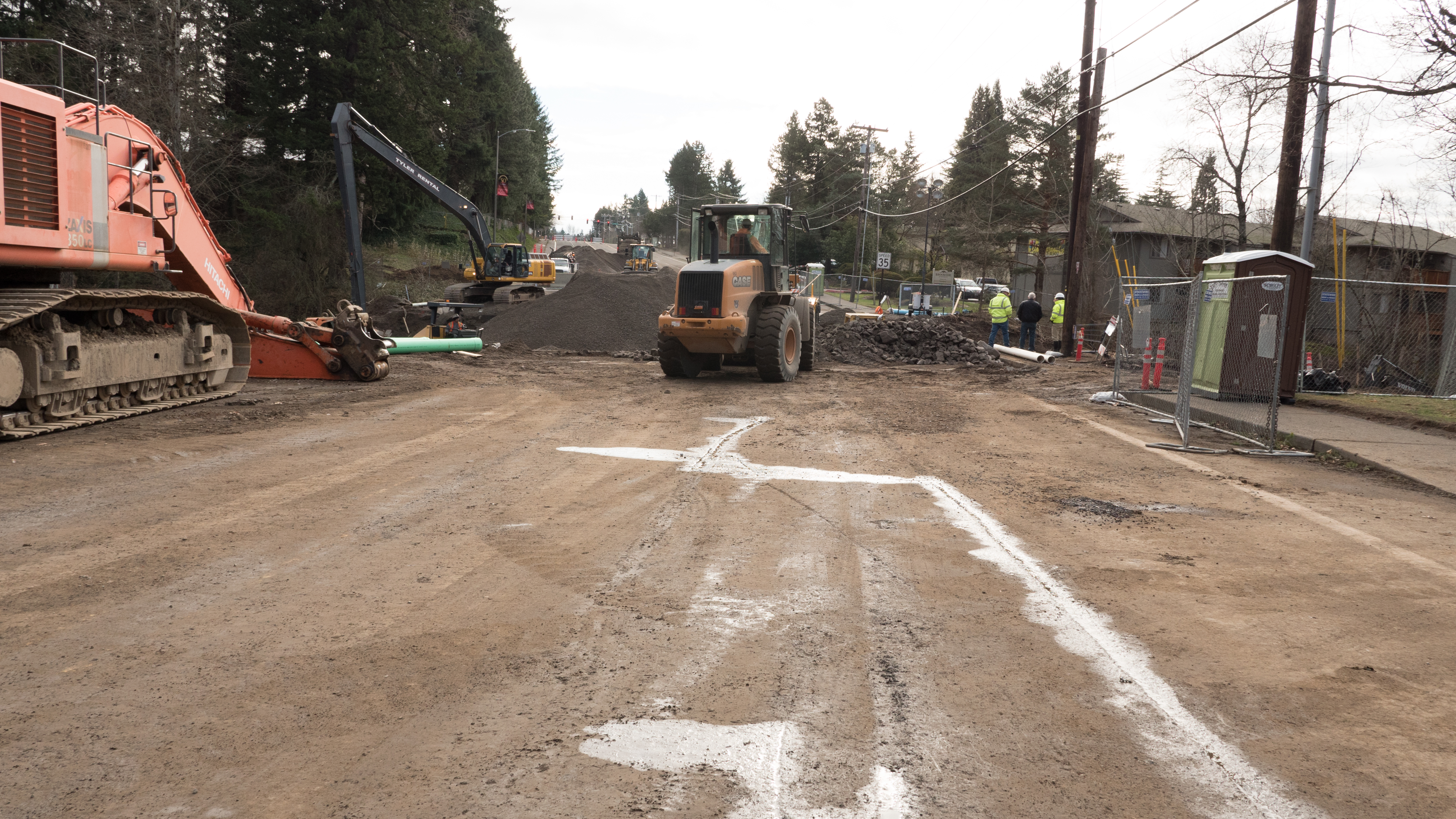
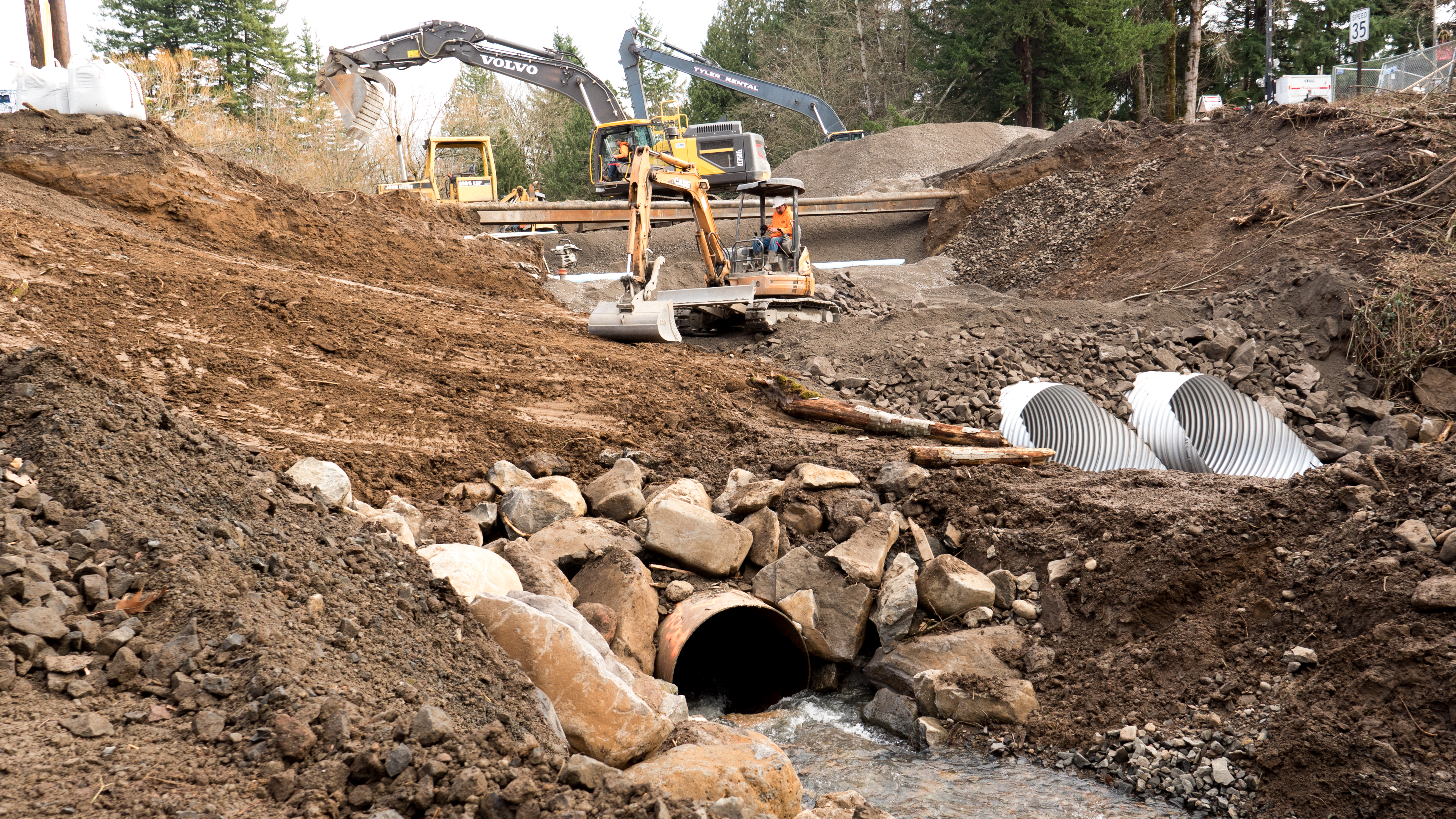
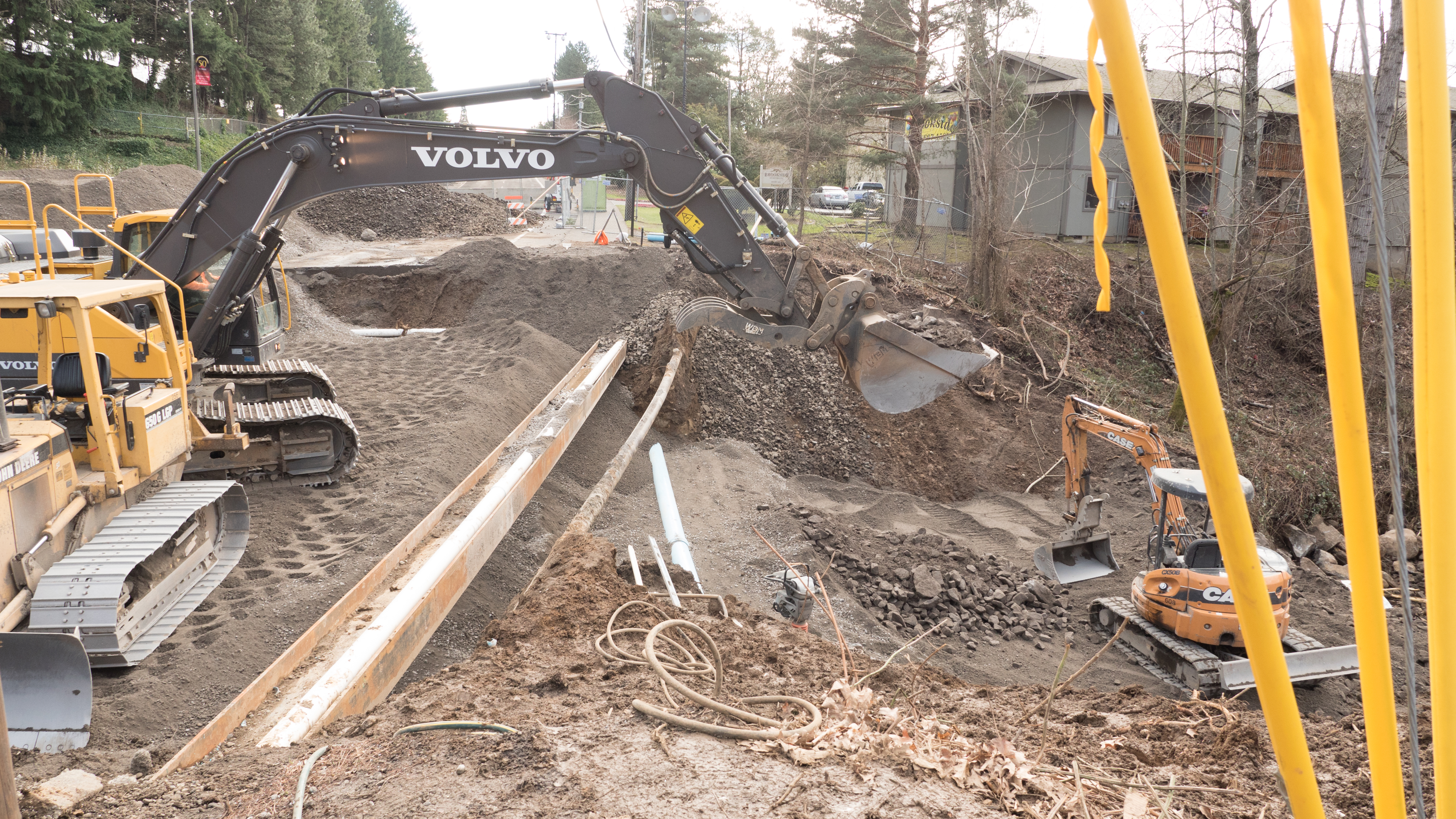

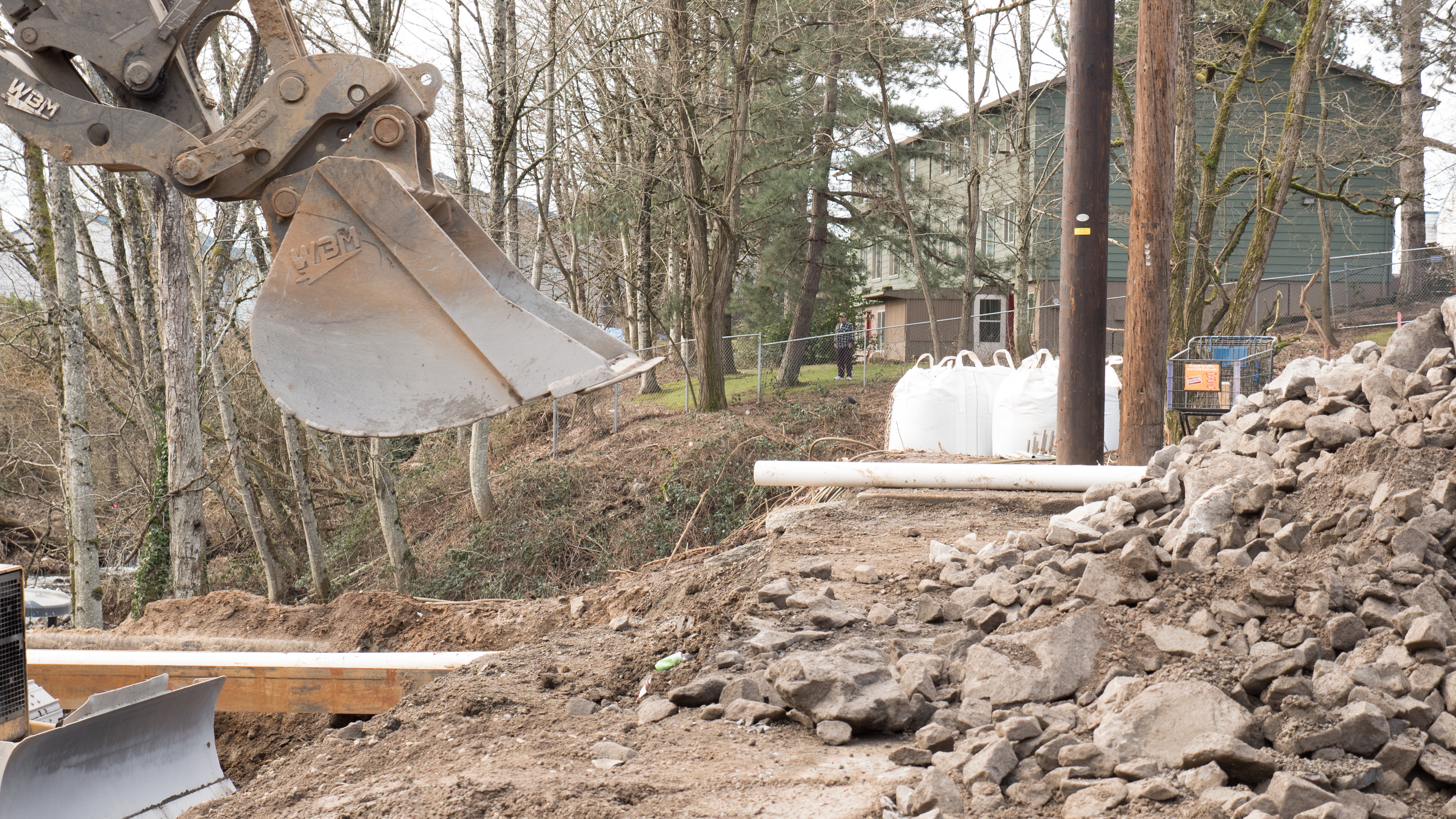
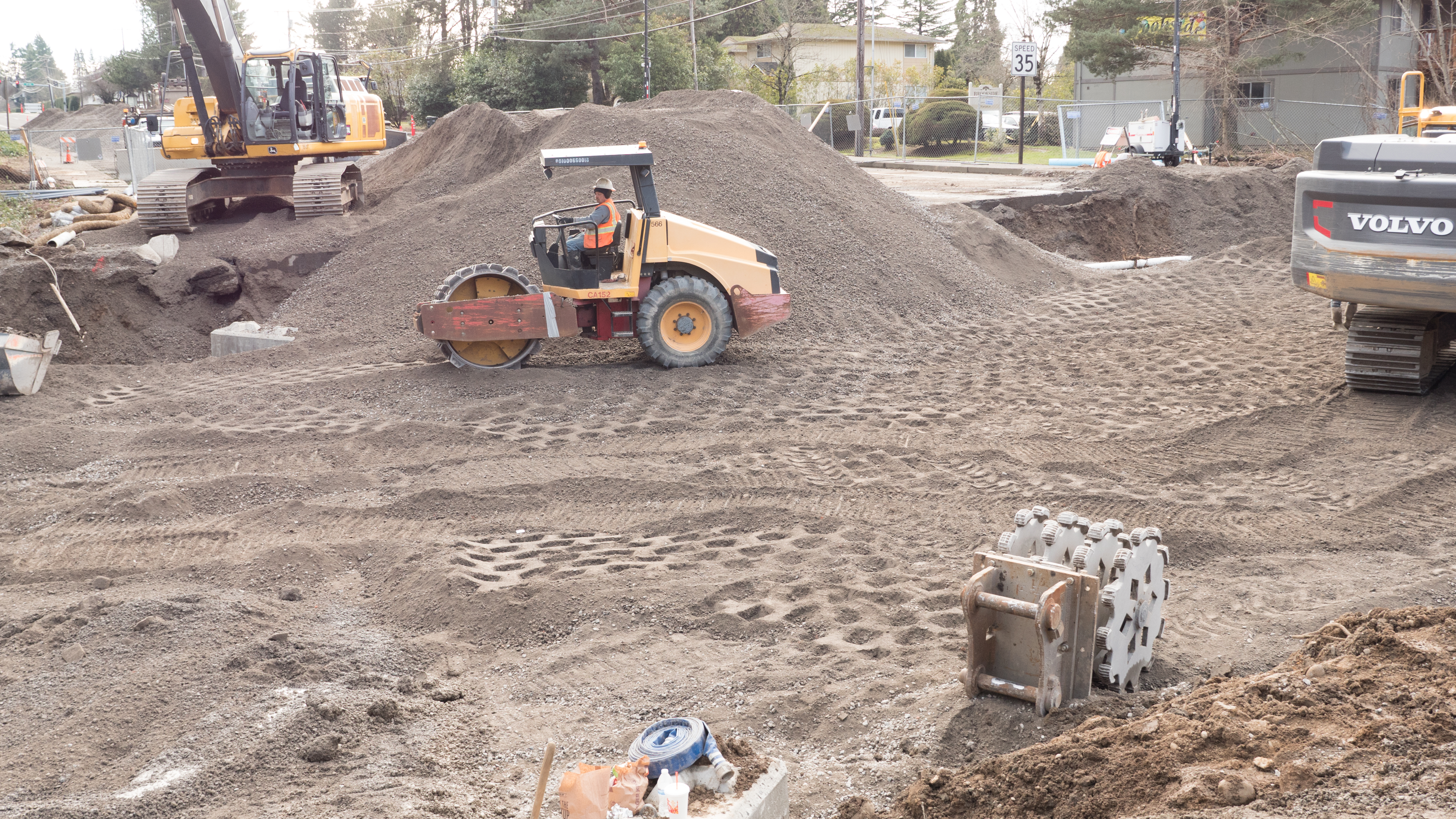
Leave a comment